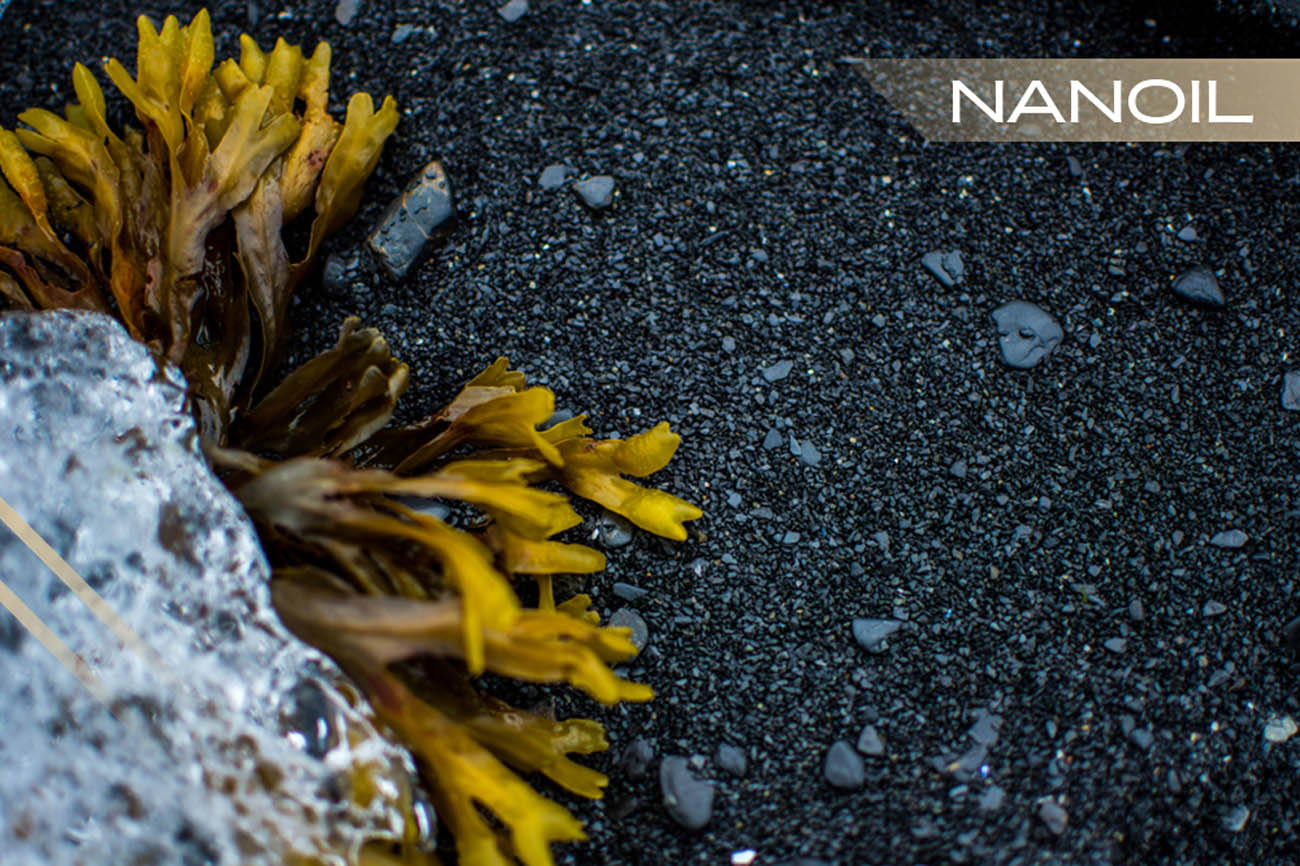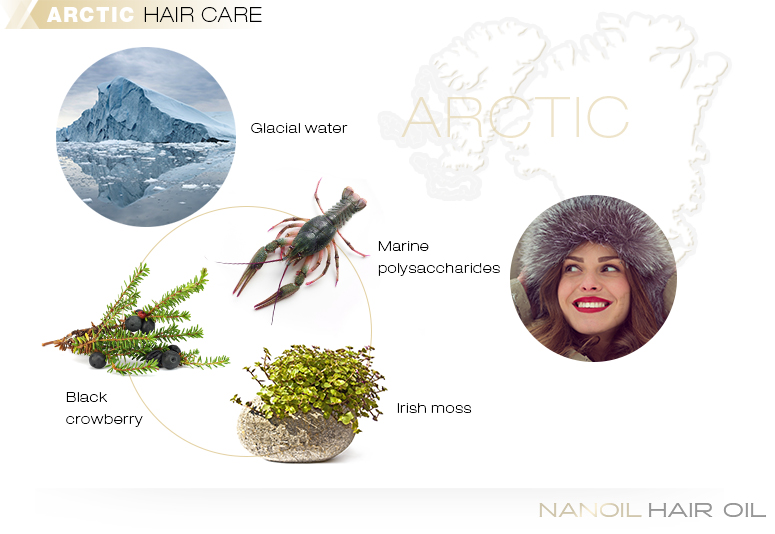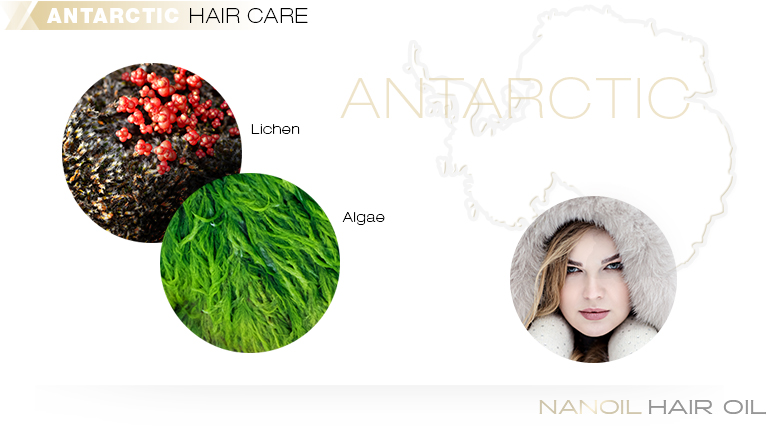- NANOIL Products
- Oils
- Face serums
- Hair masks
- Shampoos
- Hair conditioners
- Hair styling
- Hair Porosity Test
- Blog
- Contact

Do the Inuit and the Sámi people take proper care of their hair, or rather treat it...coldly? Unbearably low temperatures, eternal frost and snow, long-lasting polar days and nights - can we even think of hair care in the Arctic region? It turns out that also the land of everlasting snow can be a treasure trove of substances that are extremely valuable not only for health but also for beauty. Discover the hair care straight from an Arctic Igloo!
What can we learn from women living in the Antarctic & the Arctic?

The Arctic is a polar region located at the northernmost part of Earth - the northern polar circle. Mostly, it is dominated by treeless permafrost - permanently frozen underground ice. The Arctic natives have learned to live on a "drifting glacier", and women care about their beauty and hair with no less passion than the inhabitants of other corners of the world. Their beauty treatments are simply more practical and are often forced by unfavorable climatic conditions. Fat (animal and extruded from plants) protect their hair from frost and cleanses it perfectly.
The Arctic region teems with life: many areas are dominated by rich fauna and flora with boreal forests, the vast sites of the Arctic are overgrown with tundra, and often various mosses and lichens can be found. It turns out that many of these plants are valued in hair care. If you decide to buy "arctic" cosmetics, check if they contain the polar benefits in their composition:
irish moss, also known as Chondrus crispus. It is a valuable source of iodine, calcium, bromine, selenium, iron, and a set of vitamins A, D, E and K. It also contains carrageenan, which perfectly smoothes out the hair. Irish moss has protective properties, it moisturizes and conditions the hair. It is often called "natural silicone" because when used in conditioners and shampoos, it enhances hair shine, prevents frizziness and makes the strands easier to style.
algae - those collected in the Arctic Circle regions are the cleanest, purest and uncontaminated with chemicals or toxins. They are used in the care and treatment of skin infections, as well as to nourish and regenerate the hair. Algae contain a number of minerals and vitamins that not only improve the hair structures but also strengthen the walls of blood vessels and improve subcutaneous microcirculation. Therefore, they are an ideal remedy for weakened bulbs and hair that falls out or do not want to grow. Algae also balance the work of sebaceous glands in the skin, thanks to which they are effective in the care of oily hair. The complex of arctic Nunavik algae is particularly valued in cosmetics.
arctic water (glacial water) - is one of the cleanest spring waters in the world. Water in hair care plays a key role and is often one of the leading ingredients of shampoos, scalp lotions or hair hydrolates. Arctic water is obtained from freely flowing, natural sources from the glacier regions, thus, it is free of nitrite. For millennia it has been naturally filtered, and its cosmetic properties are invaluable. Unpolluted, rich in minerals, fully safe and skin-friendly Arctic water is willingly added to shampoos and conditioners. What's more, it can be successfully used as a hair rinse (complementing infusions of selected herbs), and as a base for mineral clays for hair. It is also worth remembering that arctic water has the same structure as water in our body, i.e. the one found in tissues and cells. This biocompatibility allows for precise hydration and penetration of other active substances into the hair and skin.
black crowberry (Empetrum nigrum) – it is willingly included in the diet of the Inuit and The Sámi people. It turns out that it has healing qualities, supports digestion, strongly rejuvenates - slows down the aging process, because it inhibits the action of elastase and collagenase enzymes. Also, it strengthens capillaries and improves skin and hair elasticity. Black crowberry quickly became an addition to creams, masks, and conditioners intended for mature hair care.
fireweed (Chamaenerion angustifolium) - It is native throughout the temperate Northern Hemisphere, including large parts of the boreal forests but its greatest "usage" has been recorded in Alaska. In addition to being a sweet sugar substitute (ice cream, candies, syrups, jellies) honey obtained from the fireweed is an excellent cosmetic that women in Alaska use not only in the kitchen, but also for beauty purposes (hair and body care). Masks and wraps made with fireweed are appreciated because they enhance hair elasticity, protect it against dehydration, provide vitamin A and C. The fireweed from the Arctic regions grows in the cleanest, unpolluted environment, which is why its cosmetic properties and vitamin content is the highest.
marine polysaccharides – particularly chitosan, a polysaccharide obtained from shellfish shells, has strong moisturizing properties – it supports hydro-lipid balance, combines a number of water molecules at the same time, and additionally, it is a source of valuable minerals and proteins (hair building material) that improve internal hair structure and regenerate the strands in their deepest layers.
omega-3 fatty acids - this is probably one of the most important, most valued ingredients in the diet of the inhabitants of the polar circle. The Inuit and the Sámi people consume them in their daily meals and apply to the hair less often, but it is mainly thanks to them that women can boast of having thick and beautiful hair. In fact, extremely low temperatures are not a threat to their strands. Fatty acids are found in natural oils (their highest concentration is found in oils for high porosity hair, i.e. in black cumin oil, flaxseed oil, sunflower oil, cottonseed oil, evening primrose oil). Of course, the Inuit people acquire good fatty acids in a slightly different way, that is, eating fatty fish and consuming fish oil.
iceland moss (Cetraria islandica) the extract obtained from it contains rare and valuable usnic acid, which protects the hair from the adverse influence of the external environment, as well as mechanical and chemical damage. The iceland moss has moisturizing and nourishing qualities thus, it is a frequent ingredient of shampoos and conditioners that are responsible for regenerating and strengthening the hair.

It might seem that the Arctic and the Antarctic - although located on two extreme poles - are in fact identical: snow, ice, permafrost and extreme cold. You couldn’t have been more wrong. Antarctica is a continent, unlike the ice drifting in the Arctic. For this reason, fauna and flora in this part of the world looks slightly different. Are there any substances valuable for hair obtained from the "white continent"? Of course! Only two main cosmetic ingredients are obtained from the regions of Antarctica, but with an outstanding effect on the hair.
algae - one of the leading substances valued in cosmetics. Their use in skin and hair care is very wide because the microelements obtained from them have the form of easily digestible bio-complexes - efficiently penetrate the lipid layer of the epidermis. In addition, their composition is similar to the composition of cell plasma in the human body - algae are, therefore, an excellent cosmetic agent. Their isolated fractions of active particles are great for hair and scalp care: they inhibit excessive seborrhea, alleviate inflammation, provide microelements, nourish hair, slow down aging processes.
lichen - the previously mentioned usnic acid is a valuable component of lichens that are pure and abound in active ingredients. It turns out that secondary metabolites derived from lichens have a number of both healing and caring properties. Added to shampoos and conditioners, they treat dandruff, fungal changes and perfectly cleanse the scalp. Lichen is also characterized by a high concentration of lichen-stearic acid, which has antiseptic properties, protects the hair from damage, provides antibacterial qualities, balances excess sebum secretion and improves the condition of damaged hair.
Leave your email address and we ll notify you when the product is back in stock.
Comments: #0